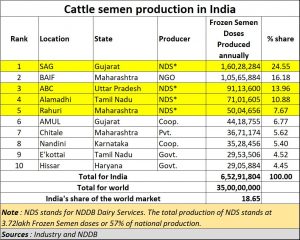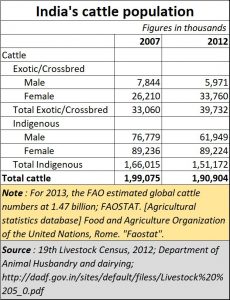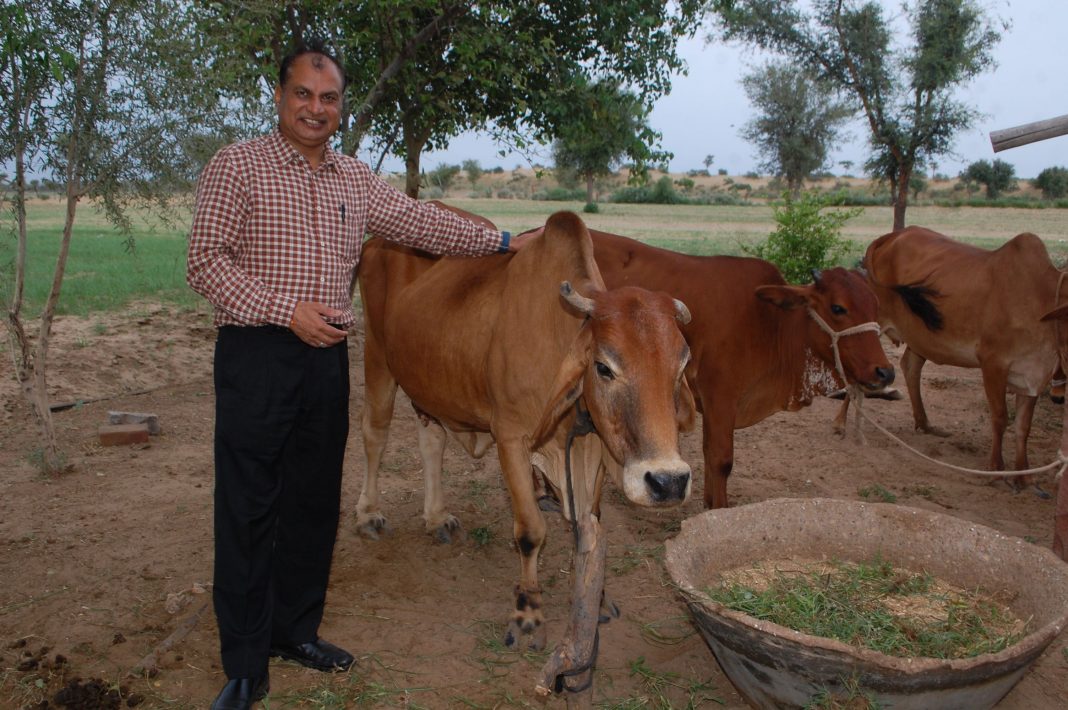https://www.moneycontrol.com/news/business/cattle-semen-and-breeding-is-a-story-that-india-should-be-proud-of-4473131.html/amp
The growth and growth of the cattle semen industry in India
RN Bhaskar — Sep 25, 2019
During the past 25 years, the cattle semen industry in India has been growing by leaps and bound. In 1995 India produced around 13 million doses of cattle sperm (often referred to as frozen straws in the industry). Almost 40% of this came from the cooperative sector. By last year, the production had swelled to 65.3 million (see table).
 And unlike then, even the private sector has begun making strides to find its place in the sun. Chitale has become one of the top ten cattle semen producers in the country. The largest, however, are NDDB Dairy Service followed by BAIF.
And unlike then, even the private sector has begun making strides to find its place in the sun. Chitale has become one of the top ten cattle semen producers in the country. The largest, however, are NDDB Dairy Service followed by BAIF.
Chitale Bandhu is a very popular brand for its milk and milk products in and around Pune. But what is not known is that Chitale’s main business is cattle semen production and sale. Milk for this closely-held family enterprise is actually a by-product.
The family needs cows to create a new generation of productive calves through the semen it sells to farmers. The need to have more cows and calves in its captive market drives Chitale to encourage its customers to produce more milk, which it then buys from them at attractive prices.
In an amazing feat of management skills. Chitale nurtures some of the best of bulls, cross breeds them, checks out the semen for both productivity and resistance to diseases, and then sells the semen to farmers in the neighbourhood. As the output of milk per cow increases, the Chitale family has to find out new ways to market the additional milk. It has to ensure that no farmer loses money, because it needs the farmer to look after the cows that have been impregnated with some of the best semen available in the country.
To ensure that the cows and calves remain healthy, the family has invested in technology which allows it to monitor the health of each of the cows in his captive territory. SMS alerts are sent to farmers advising them when a specific cow has to be allowed to go dry, so that it is readied for the next cycle of insemination.
The alerts tell farmers which calf needs which type of feed, inoculation, nutrition, or care. The family maintains genealogical records of each cow and calf going back to several generations. “Most people decide to get a couple married after examining their horoscopes and ensuring that they match. The genealogical tree helps us do the same type of matching between cows and bulls as well,” says a Chitale insider.
Chitale’s efforts are similar to those adopted by almost all the major players. Undoubtedly, the role of NDDB is the most significant (see chart). At all cattle semen stations, each cow and bull and calf is RFID-tagged, and its biometrics carefully observed and documented. Then each cattlehead is given the type of treatment required at that point of time.
 India as a cattle semen producer
India as a cattle semen producer
The cattle semen stations have ensured that even though India’s cattle population is just 13% of the word’s cattle population (http://dahd.nic.in/about-us/divisions/cattle-and-dairy-development), its share of semen production is close to 19% of global production, and this share continues to grow at a healthy pace. The country has also begun exporting its semen to countries that want Indian cattle strains (Brazil is one country which values this country’s cattle strains immensely). Expect developing countries in South Asia and Africa to be major customers in this market.
Today, almost all the big players in the dairy sector – including private players like Hatsun and Heritage — have linkages with semen producing stations. Semen and artificial insemination (AI) services are provided to farmers as well. Thus, thanks to quality AI, milk production is bound to grow faster than bovine population.
True, when compared to the global semen business, India is still in its infancy accounting for annual sales of just Rs.117 crore compared to global sales of almost US$ 1.7 billion. But the figures can be misleading. This is because while the average price for each frozen straw in the world is around $5, in India it is priced at around Rs.18. The pricing suits India’s purchasing power and has actually enabled small dairy farmers to keep pace with the world when it comes to milk output per cattle head.
It also suits India where more than one-fifth (23 per cent) of agricultural households have very small parcels of land (less than 0.01 hectare). Dairy farming in India is largely what Verghese Kurien – the man behind this country’s milk revolution — often referred to as “production by the masses, not mass production”.
Thanks to AI — using semen which combines high output with disease resistance to local ailments, –small farmers are “are better able to withstand distress due to extreme weather conditions”, says Omveer Singh, managing director, NDS. His key concern is “to conserve and improve the productivity of Indian indigenous breeds”. His aim is to work towards 100 percent AI along with advanced cutting-edge reproductive technology.
Singh points to huge biodiversity of 43 indigenous cattle breeds and 13 buffalo breeds. These species have survived over last hundreds of years and ha e thus developed immunity to local conditions and pests. The cattle semen stations try cross breed these species with cattle that produce larger quantities of milk, without allowing the immunity factor to come down significantly. For instance, today, the Gir variety of cows have seen an increase in milk output from 4.85 kg per day to 6.77 kg per day per indigenous animal.
All cattle semen stations have even begun working on sexing of semen to regulate the sex ratio of cattle offspring. The idea is to produce more cows than bulls. The sex- sorted semen technology is expected to be standardised for indigenous breeds like Sahiwal, Haryana, Red Sindhi, Rathi and Gir.
As NDDB chairman, Dilip Rath points out in a paper (Changing pattern in bovine semen production in India (https://www.dairyknowledge.in/sites/default/files/production.pdf that he co-authored with R.Kasiraj and M.U. Siddiqui), “India possesses the largest bovine population in the world consisting of 190.9 million cattle and 108.7 million buffaloes (19th Livestock Census-2012). He explains how “AI in India started before World War II in the barns of Maharaja of Mysore. Dr. J.D. Sampath Kumaran was the first person to do AI in cattle at the palace dairy of Maharaja of Mysore. He inseminated Hallikar cows with fresh semen collected from Friesian bulls in 1939 (Banerjee,1998; IASRI online course http://ecoursesonline.iasri.res.in/mod/page/view.php?id=153815 as on August, 2016).”
The success of the work that the cattle semen stations have been doing is evident from the numbers. Watch the population of cattle according to the 19th Livestock Census that was released in 2012. The cattle population declined from 199 million to 191 million. But milk production went up from 122 million tonnes in 2010 to 146 million tonnes in 2014 and then to 176 million in 2018. Some of this increase was on account of better cattle feed, but AI too had a part to play. And that is what the cattle sperm stations did for India.
Expect more news on this front in the coming years.











































COMMENTS